Syrian hibiscus: description, varieties and subtleties of cultivation
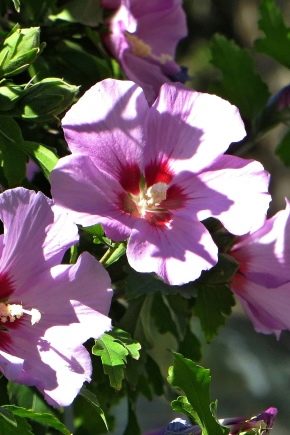
A large number of garden and indoor flowers are cultivated representatives of wild plants. Biologists and breeders are constantly looking for new plants and adapting them to life in gardens, parks and indoor environments. One of the representatives of this group is hibiscus. The tropical flower has gained wide popularity among European gardeners. The flowering plant can be seen not only among indoor flowers, but also in the flower beds of personal plots and in greenhouses.

Peculiarities
Syrian treelike hibiscus is a bright representative of the Malvov family. The tropical flower has several names, but the most popular are "Ketmia" and "Syrian rose". The natural habitat of the flower is the tropical regions of China. The maximum plant height in nature can reach over 5 meters. This variety of hibiscus can be found in the southern regions of Russia, Ukraine, Moldova, as well as in the Crimea.
The plant has low frost resistance. The height of the adapted specimens is about 2 meters, and the diameter of one inflorescence reaches 20 cm. Flowers are formed only on the shoots formed in a given year. The surface of the petals, depending on the variety, can be simple, semi-double and terry, and can also have a monochromatic and multi-colored shade.
Depending on the variety, hibiscus can have the following color of flowers:
- Red;
- purple;
- White;
- blue;
- light pink;
- bright crimson.
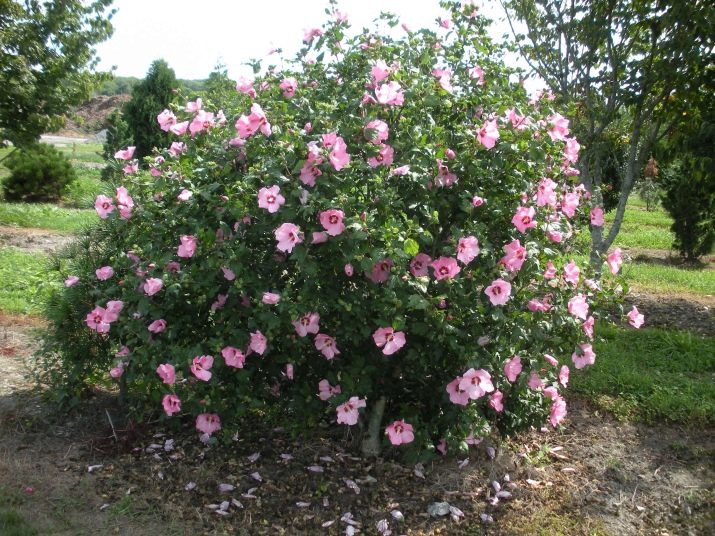
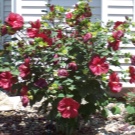
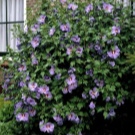
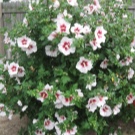
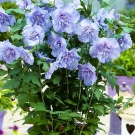
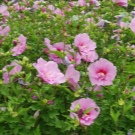
The plant begins to bloom in early July and ends in late October. The main feature of the flower is abundant and long flowering, as well as blooming and wilting of buds within 48 hours. You can not only admire the petals of this flower, but also make a fragrant drink out of them. On an industrial scale, delicious, aromatic and vitamin hibiscus tea is made from delicate inflorescences. Gardeners recommend not using the plant as a separate growing flower, but planting it together with roses, chrysanthemums and lavender.
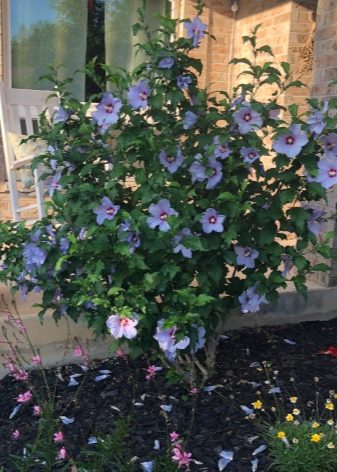

Varieties
Garden hibiscus is available in several species. Biologists identify the most popular varieties that are most popular.
- "Oziau Blue" - deciduous shrub, the maximum height of which reaches 3 meters. Ribbed leaves of a dark green color grow in length by more than 10 cm. The color of the inflorescences is blue with a pink heart. This variety has poor resistance to low temperatures and therefore requires insulation before the onset of frost.
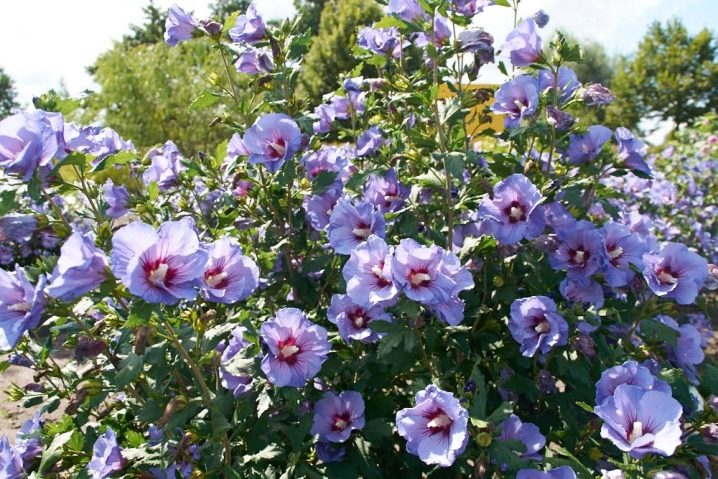
- Hamabo - a slow-growing variety, which annually adds only 15 cm in height. The color of the inflorescences is pale pink with red stripes. The maximum height of an adult specimen is 2 meters.
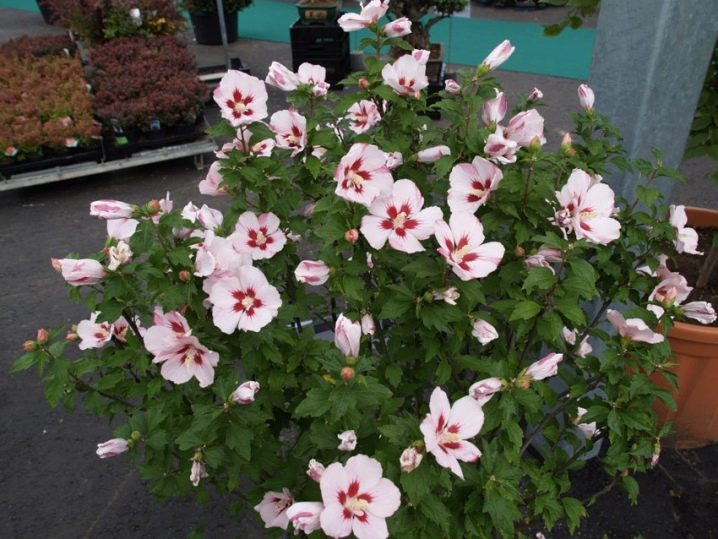
- Red Hart - a popular frost-resistant variety that belongs to fast-growing straight shrubs. The bush has a compact and dense crown up to 2 meters wide and more than 1.5 meters high. The inflorescences are white with a red core. The shape of the dark green oval leaves resembles chrysanthemum leaves. This species belongs to late flowering varieties.

- "Matilda" - one of the brightest and most colorful varieties that produces pink flowers with red blotches. The maximum height of the bush is 3 meters. The leaves are dark in color and jagged edges.
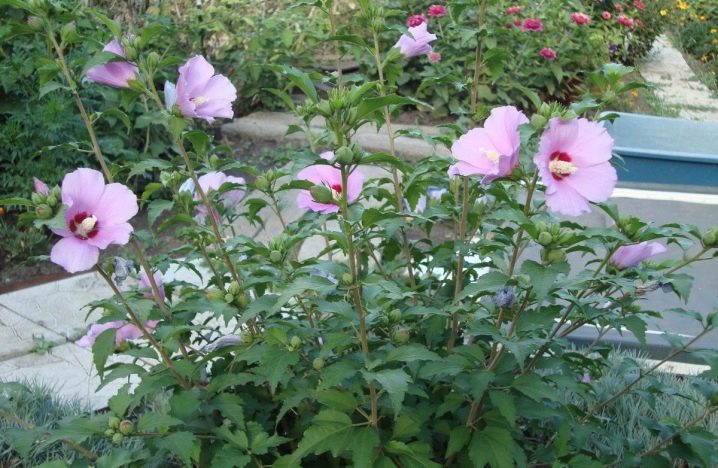
- "Mike" - a gentle and elegant variety that has a high level of resistance to diseases and low temperatures. A distinctive feature is the slow growth and falling off of all leaves at the end of autumn. Huge pink inflorescences with a red heart adorn the garden throughout the summer.
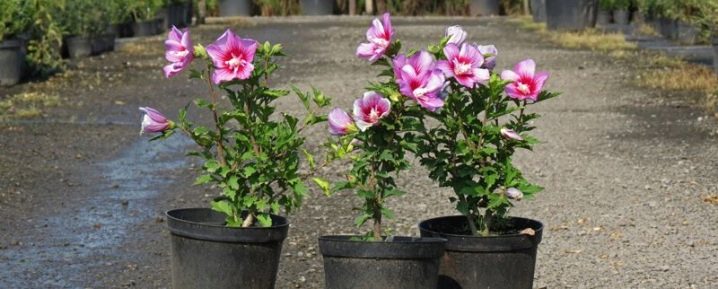
- "Blue Chiffon" - a unique variety that has small leaves and blue double flowers. The plant easily tolerates drought and low temperatures, and also prefers sunny areas of the garden.
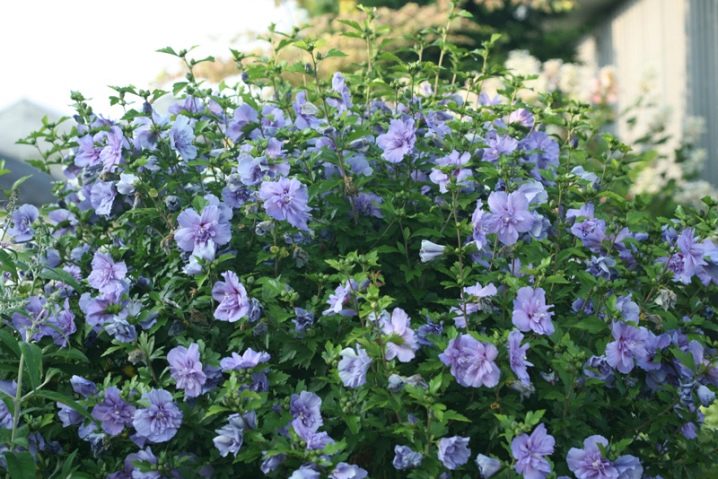
- Duc de Brabant Is an outdoor variety that has an average level of green mass gain and is used to create many floral arrangements. The plant has a long flowering period and a high level of resistance to low temperatures.

- Lavender - a tall variety, the height of which can reach over 3.5 meters. The flower has dense rounded leaves with jagged edges. The size of lilac-pink flowers exceeds 9 cm.

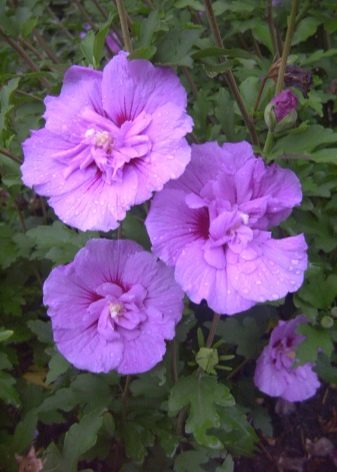
- "Ardens" - a compact plant that has a dense and uniform crown with purple inflorescences. In the center of the lilac inflorescences there is a dark red spot with a diameter of more than 7 cm.
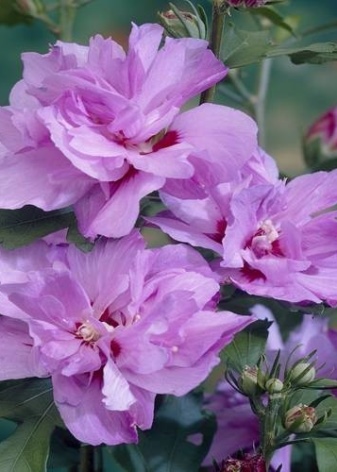
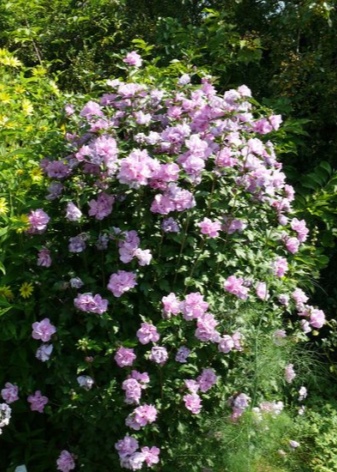
Landing
The most favorable season for planting a flower in open ground is spring with an average daily ground temperature of more than 16 degrees. To grow a plant in open ground in the climatic conditions of the Moscow region, it is necessary to choose well-lit areas with loose and fertile soil. The choice of the place where the tea rose grows must be approached as responsibly as possible due to the possibility of a flower growing in one place without transplanting for more than 15 years.

Gardeners do not recommend planting plants in lowlands with heavy, poor, waterlogged and clayey soil. The selected site for planting must be enriched with peat, humus, manure and a complex of mineral fertilizers. All components must be evenly distributed over the site and dug up. If there is a large amount of sand in the soil, ordinary soil should be scattered over the flower bed. The main stages of planting a purchased young plant:
- the acquisition of a healthy and strong plant;
- the formation of a planting pit, the diameter of which should be 2 times larger than a clod of earth with roots;
- formation of a drainage layer of crushed stone and sand;
- removing the plant from the container without pre-moistening the soil;
- placing the plant in the planting recess;
- careful filling of voids with nutrient mixture with simultaneous compaction of the root zone;
- abundant watering;
- mulching the planting area.
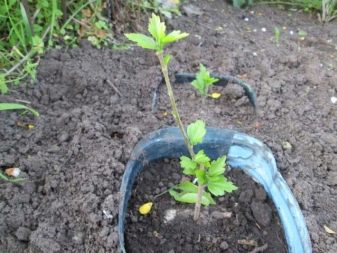
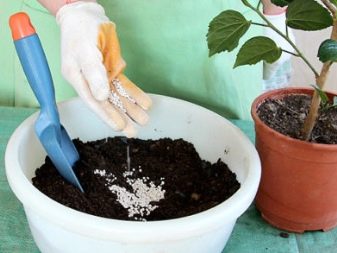
For comfortable growth and development of the plant, the distance between the planting holes should not be less than 150 cm. After planting the bush, half of the shoots must be removed. This manipulation will stimulate the emergence of new young processes. Pine bark can be used as a mulching material, which will prevent the root system from drying out and freezing, and will also become an obstacle to the growth of weeds.
Care
Garden hibiscus is an unpretentious plant that requires a minimum amount of attention both outdoors and at home. For the rapid growth of young shoots, it is imperative to remove old trunks and dried leaves, as well as timely destroy weeds and loosen the soil around the trunk. A necessary procedure is crown thinning and planting a flower in a sunny area. Drafts and strong winds have a negative effect on the plant.
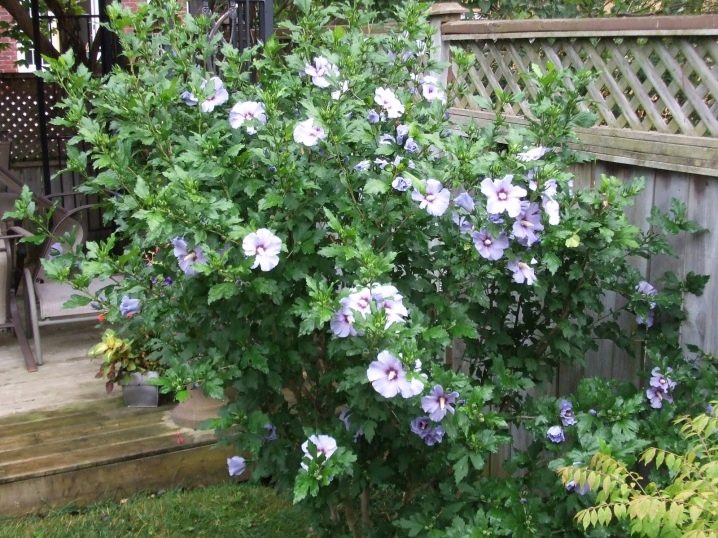
Double-flowered hibiscus is susceptible to freezing in climates with low temperatures. To facilitate care, experts recommend installing special supports near the flowers that will prevent the shoots from falling apart and spreading along the ground. Removing dry buds is a mandatory procedure that contributes to the formation of new inflorescences.Before the onset of cold weather, it is necessary to cover the root zone with fallen leaves, hay or straw, and cover the above-ground part with non-woven material. After the onset of the thaw, it is imperative to remove the shelters.
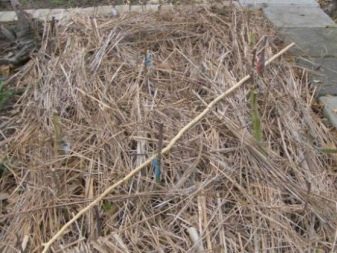

Top dressing
For the full growth and development of the plant, as well as for the formation of a large number of flowers, it is necessary to regularly apply mineral and organic fertilizers to the soil. During the flowering period, hibiscus needs mineral supplements with a high level of phosphorus. It is necessary to add the nutritional composition during the entire summer and autumn season once every 14 days.
To increase the plant's resistance to low temperatures, it is necessary to feed it with potash fertilizers in mid-autumn. Experienced gardeners recommend alternating mineral and organic fertilizing. In early spring, it is advisable to fill the root zone with a mixture of compost and soil.
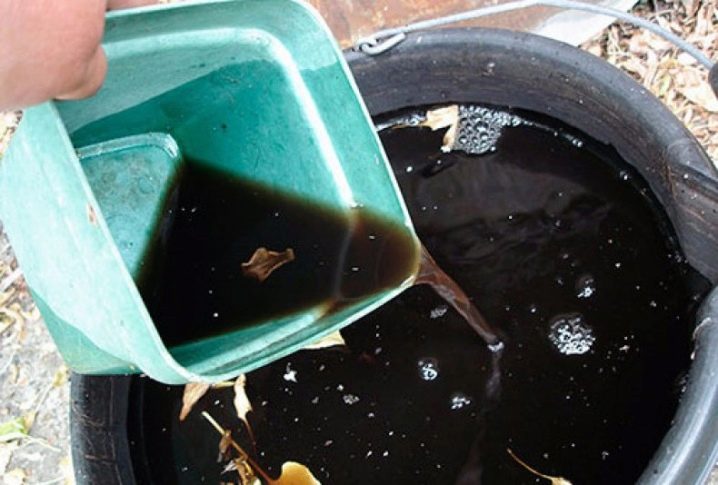
Watering
The tropical plant prefers moderate and regular watering, which should be carried out only after the top layer of the earth is completely dry. The most favorable time for soil moistening is early morning or evening. In the hot season, water the plant at least once every 2 days. After the soil dries up, it is imperative to loosen the soil. This procedure will help to enrich the root system with oxygen and accelerate the growth of the plant.
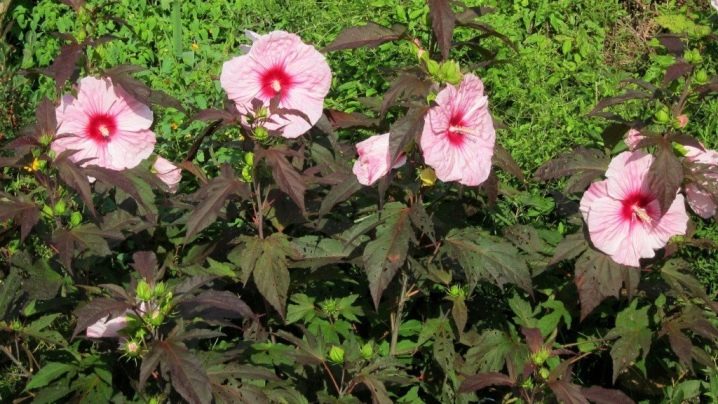
Pruning
To obtain a beautiful bush with a large number of inflorescences, it is necessary to prune the hibiscus. Spring removal of dry shoots is a necessary sanitary measure. Dried forests and fallen leaves must be removed from the site and burned. Formative pruning can be done in spring or fall by trimming last year's shoots to the required level.
In standard plants, one main shoot should be left, and the length of the remaining processes is reduced to 3 buds. For the correct formation of the bush, it is necessary to carry out an annual spring shortening of the lateral shoots to 1 bud and leave the central trunk intact. Removing shoots in late autumn will allow you to get large inflorescences next year. Spring pruning will result in medium sized flowers but more.
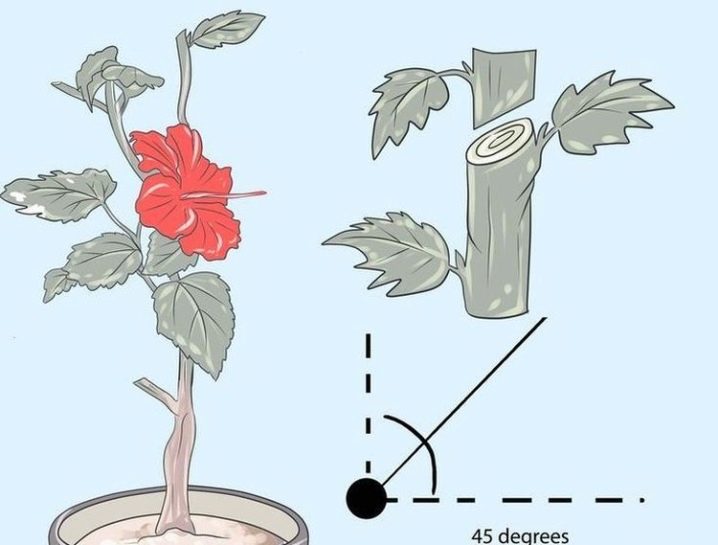
Reproduction
You can grow a new plant using seeds, branches and by dividing the mother bush. The simplest and most popular propagation method is rooting cuttings. To obtain planting material, it is necessary to cut off the stalk with 3 or more nodules from the young shoot with the blade of a sharp cutting tool and place it in water. To speed up the process, it is necessary to add a small amount of root growth stimulants to the water.
Only after the appearance of several strong roots can the shoot be planted in a pot with a prepared nutrient mixture. For wintering, pots with young bushes are left in the apartment, and transplants into open ground are carried out only at the end of spring. In the absence of the possibility of placing young flowers in the room, it is imperative to make a small greenhouse for them at the beginning of winter.
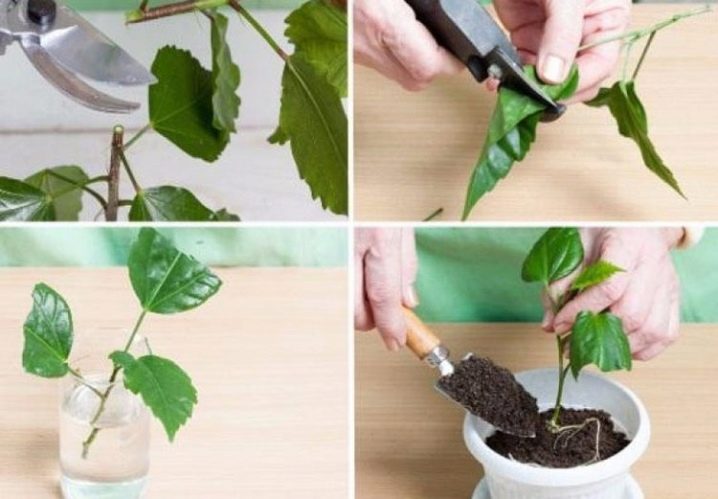
To obtain a plant from seed, a planting container or greenhouse must be prepared in advance. On the surface of the nutrient soil, small furrows with a depth of 10 mm should be made and seeds should be placed in them. The planting material covered with soil must be moistened with a spray bottle. The container or plot of land with seeds must be covered with plastic wrap, which can only be removed after germination. Novice gardeners should remember to moisturize and ventilate the planting boxes.
During the period of plant growth, it is necessary to regularly loosen and moisten the soil, as well as treat plants from diseases and pests. After the appearance of the first two true leaves, it is imperative to thin out the crops. Only after the formation of more than 5 leaves on a flower at least 20 cm high can the shoots be dived and planted in flower pots or in open ground.
To obtain new plants from the bends, it is necessary to tilt the lateral bends to the ground at the beginning of spring and dig them in. For several months, the buried shoots must be regularly watered and after the appearance of new shoots, the new plant can be separated from the mother bush and transplanted.
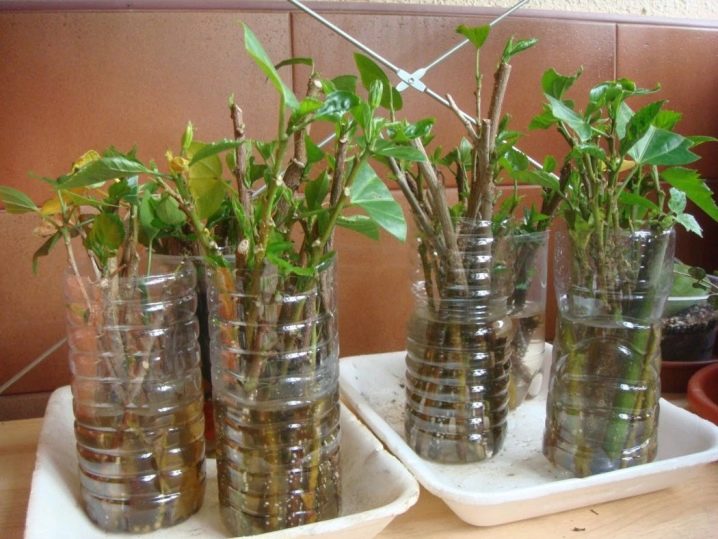
Possible problems
Various types of diseases, dangerous pests and improper care can provoke wilting and death of a plant. Among the most dangerous pests of hibiscus, biologists distinguish the following insects:
- aphid;
- wireworm;
- Chafer;
- thrips;
- spider mite;
- whitefly.
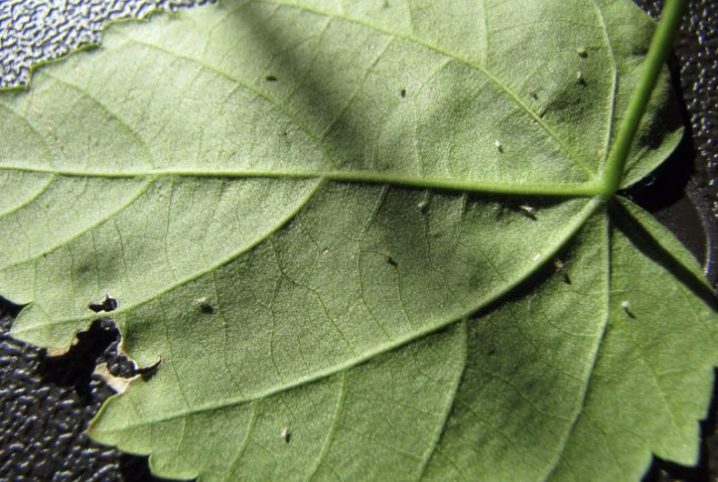
When growing a flower, biologists recommend paying attention to the following diseases:
- chlorosis;
- powdery mildew;
- fungal spot;
- root rot;
- rust;
- gray mold.
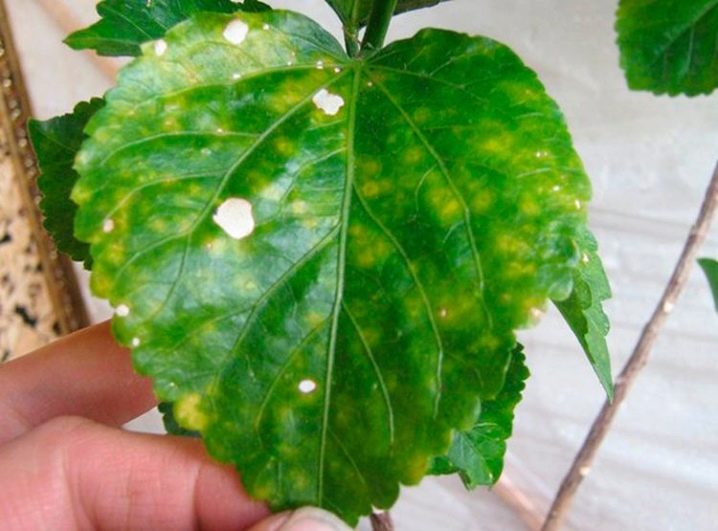
For the treatment of plants and for the destruction of pests, special chemical preparations must be used. The most common types of problems in growing hibiscus and their causes are:
- falling foliage - lack of nitrogenous fertilizers, rotting of the root system, waterlogging of the soil, damage to the plant by pests;
- the appearance of spots - the presence of fungal or bacterial types of diseases;
- yellowing of leaves - mechanical damage to the root system, the presence of fungal diseases, a low level of watering;
- lack of flowers - lack of nutritional components.
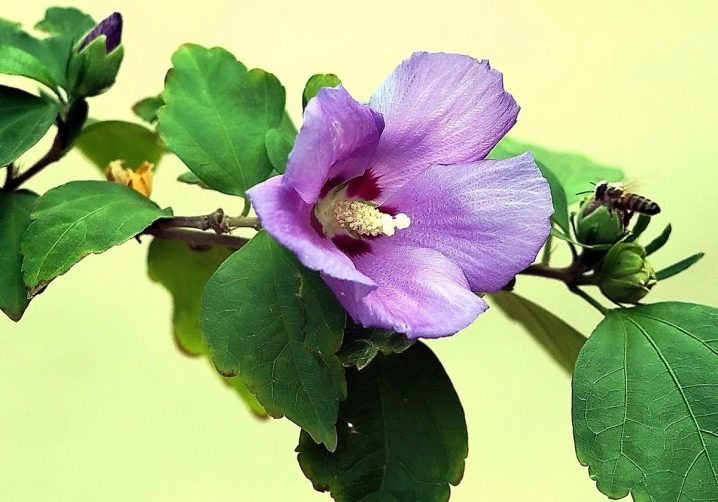
If the leaves turn yellow, fall off and become stained, you need to quickly find out the cause and take all the necessary measures to eliminate the problem that has arisen. Not only experienced gardeners, but also beginners can create a blooming flower bed on their personal plot. Garden hibiscus can become a bright accent of the flower arrangement. The tropical plant has occupied a worthy place in the flower beds of gardeners around the world for many years. With a minimum amount of effort and financial costs, you can admire the blooming cloud throughout not only the whole summer, but throughout the fall. Before planting a hibiscus, you need to carefully study its features and rules for caring for it.
How to grow Syrian hibiscus, see the video below.




























The comment was sent successfully.